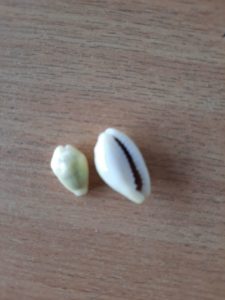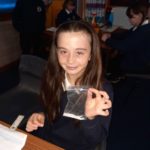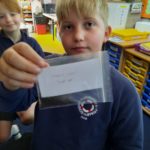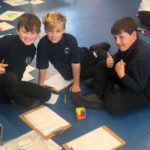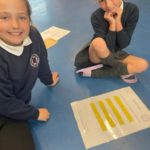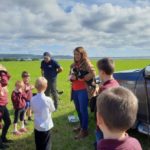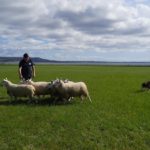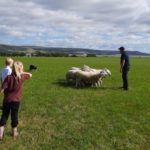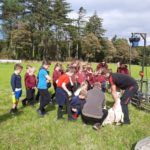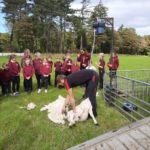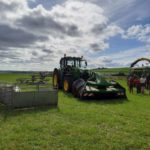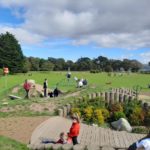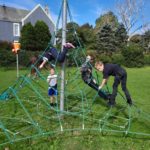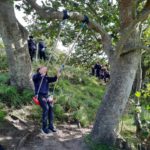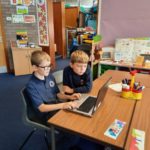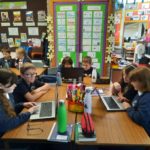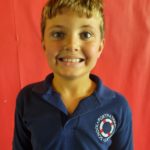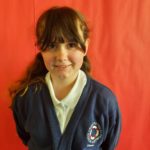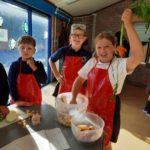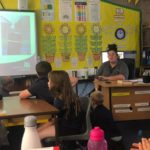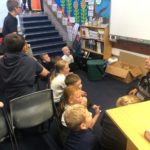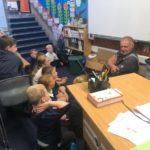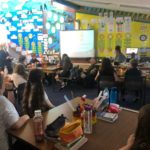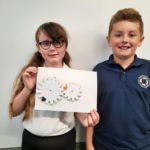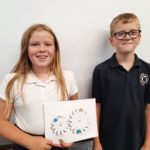As part of our upcoming Maths Week Scotland event starting soon, Primary 5 – 7 met with Gillian from the Museum on the Mound in Edinburgh today. We participated in a live online, interactive workshop to explore the History of Money.
The session began by discussing what do we use money for? The children came up with the explanations that we use it to exchange something to get something else. We could save or we can gift it. Tilly said that we have to earn money. Erin explained that we use coins and notes, Apple Pay, Contactless cards today.
We tried ripping polymer samples of bank notes but couldn’t do it. They are pretty tough.
The children were given samples of items which were used as money long ago. The first items were cowry shells. These were used as money in China 4000 years ago and in Africa 100 years ago.
These are strong, rare and couldn’t be copied. They were used far away from the sea. 500 years ago, one shell would buy you a cow, approx. £1500 in today’s money.
We then looked at a tevau, which was used as money in the Solomon Islands. The children tried to identify what this 9 metres long item is made from. It turned out to be made of bird feathers which are trimmed from the bird and it is then released. It would take one person over a year to make a tevau, thus it was a very valuable item. Cameron stepped out 9 metres with string in the classroom. It was 40 of his foot lengths. Everyone agreed that not everyone has the same sided feet so the length might be inconsistant if measured using different people’s feet sizes.
Further sample envelope was shared with the children in groups. They had to consider these discussion points:
- How would you describe this object?
- What do you think it is?
- Why do you think it would be valuable to the people who used it?
- Can you work out the object’s length?
- Do you think it would be easy to use as money? Why/Why Not?
Group 1 – Tea was packed in to bricks and used as money, heavy. Used in China & Tibet as money. It could be drunk and broken into smaller parts. One tea brick weighed about 1kg and would dissolve if wet.
Group 2 – Cocoa beans pods. These were used by the Aztecs in Mexico as money and were valuable and used in lots of ways; to drink, buy things with them. A rabbit would cost 35 cocoa beans. They would make good money as they were easy to carry around, but fake ones made of mud were common.
Group 3 – Tobacco leaf. This is ground up and made into cigarettes. When they didn’t have enough coins, Americans would use it in big barrels which weren’t easy to transport. People used to be paid in tobacco.
Group 4 – Salt. Big blocks were used in Ethiopia in Africa until about 100 years ago. They would cut it up into little bricks and use as money. It was big and heavy and was used to preserve food. A timani of salt would buy you 8 chickens.
Erin noted that all these items had other uses besides money.
We learned that anything could be used as money as long as everyone agrees how much an item is worth. We sometimes don’t even use physical coins and money any more. During the pandemic, bartering of items returned in many places around the world when people were unable to get to banks to use modern forms of money.
The children then had an opportunity to design their own badge with a money themed design. These will be posted off to the Museum on the Mound and returned as real badges for the children to enjoy.
# Successful Learners


